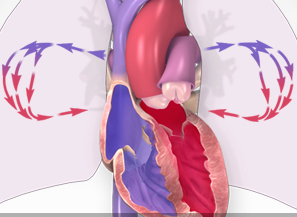New guidelines help doctors assess severity of heart valve disease
By American Heart Association News

New guidelines from the American Heart Association and the American College of Cardiology are expected to help doctors better assess the severity of valvular heart disease.
Each year more than 5 million people are diagnosed with valvular heart disease, many of whom never noticed symptoms. The just-released guidelines offer updated direction for doctors to improve valvular heart disease diagnosis and treatment, based on the latest scientific findings.
VHD occurs when one of the heart’s four valves doesn’t allow blood to properly flow through the heart. The valve could be too small or tight, or it could not close properly. An abnormal heart valve can be present at birth or valve problems can develop with age.
The guidelines help doctors better assess the severity of valvular heart disease, depending on the degree of the valve narrowing or leakage, the presence of symptoms, the heart chambers’ response to the valve lesion or any change in the heart rhythm.
An improved risk assessment can also better determine what treatment might be best for the patient. Some people live long and full lives with mild valvular problems and never require surgery. But once a heart valve begins to affect the heart’s ability to pump blood, it’s likely to require a repair or replacement.
For the first time, the guidelines address the use of transcatheter aortic valve replacement, a relatively new procedure, similar to placing a stent in an artery. This, and other less invasive procedures are offering new options for patients who previously may have been at too high of a risk for treatment. These new advancements in treatment make it feasible to treat more patients who may not have previously been candidates for surgery – even those who may have severe disease but few symptoms.




